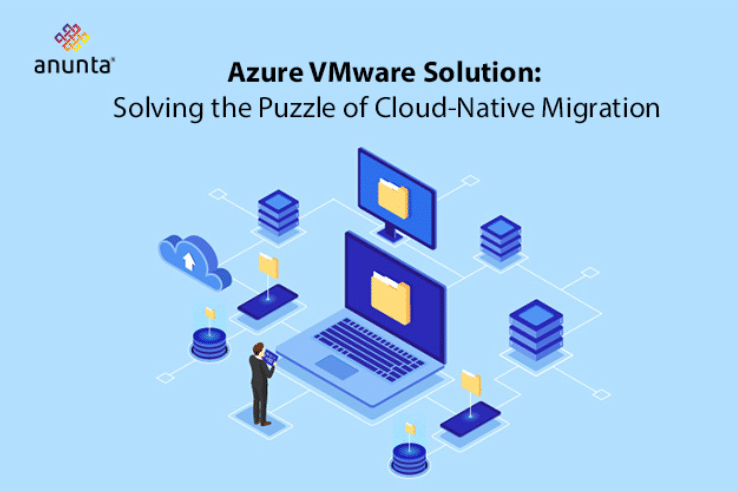
Cloud-native applications are designed to take full advantage of cloud computing, enabling businesses to innovate faster and scale with ease. These applications leverage cloud infrastructure, containerization, and microservices to provide flexibility, speed, and efficiency. However, migrating traditional, legacy applications to a cloud-native architecture poses several challenges. Organizations must deal with technical complexities, potential disruptions to business processes, and new security risks.
Azure VMware Solution (AVS) offers a bridge to simplify this transition. It enables businesses to migrate their existing workloads to a cloud-native architecture while retaining a familiar VMware environment, providing both flexibility and security.
Transitioning to cloud-native applications involves significant changes to how applications are built and managed. The challenges range from technical complexities to organizational resistance, as well as security and compliance risks.
Migrating legacy applications to a cloud-native environment often requires application modernization. This process includes refactoring applications to fit into containerization frameworks or rearchitecting them for microservices. These tasks can be resource-intensive, requiring deep technical expertise and careful planning.
Beyond technical issues, migrating to the cloud can trigger cultural changes within an organization. The shift to a cloud-native mindset demands a new set of skills, as teams must adapt to cloud operations, DevOps practices, and agile methodologies. Training and skill development are critical to ensuring a smooth transition.
Adopting cloud-native applications brings new security and compliance risks. With microservices, containerized workloads, and multiple cloud environments, ensuring that data remains secure across distributed systems becomes more complex. Meeting regulatory compliance across these systems also adds an extra layer of complexity.
Azure VMware Solution efficiently overcomes these challenges by offering a familiar environment for migrating applications. This solution enables businesses to continue using VMware tools and platforms they are accustomed to while taking advantage of Microsoft Azure’s scalability and innovation.
AVS allows companies to migrate workloads without needing to re-architect applications immediately. It lets organizations shift existing VMware workloads directly to Azure, ensuring a seamless experience for IT teams already proficient in VMware technologies.
Once applications are running on Azure VMware Solution, businesses can leverage Azure’s robust cloud-native services. These include Azure Kubernetes Service (AKS) for containerization and Azure DevOps for automated deployment pipelines.
Azure VMware Solution helps simplify the path to modernizing applications by facilitating containerization and adoption of microservices. This hybrid environment lets businesses run legacy workloads while incrementally modernizing them.
To achieve a successful migration to Azure VMware Solution, organizations should follow a well-structured process that minimizes risks and maximizes benefits.
1. Assess the Current Infrastructure: Start by evaluating your existing VMware workloads to identify those most suitable for migration to AVS.
2. Plan for Application Modernization: Establish a roadmap for modernizing legacy applications, breaking down which applications can benefit from containerization and microservices.
3. Migrate in Phases: Start with a pilot migration to test the process and ensure the applications function well in the cloud environment. Gradually scale the migration for the rest of the workloads.
4. Leverage Azure Services for Optimization: Use Azure’s cloud-native tools to automate deployment, monitor performance, and ensure cost-efficiency.
Begin modernizing applications by containerizing workloads where possible, adopting microservices architectures where feasible, and refactoring applications for cloud-native compatibility over time.
Utilize Azure’s monitoring and scaling tools to optimize workloads, ensuring they are not only cloud-native but also cost-effective. Automation and real-time analytics can help fine-tune performance and lower operational costs.
Cloud-native architectures require a different approach to security, but Azure VMware Solution helps address many of these concerns through robust, built-in security features.
AVS offers enterprise-grade security and encryption, ensuring that data is protected both at rest and in transit. It also provides tools to monitor workloads continuously for potential threats and vulnerabilities.
Azure VMware Solution simplifies compliance management by integrating with Azure’s suite of compliance tools. This helps organizations meet industry standards such as GDPR, HIPAA, and others, ensuring that both data and applications remain compliant with regulatory requirements.
Migrating to cloud-native applications can present numerous challenges, but with Azure VMware Solution, organizations can overcome these barriers more effectively. By providing a familiar environment, simplifying modernization efforts, and ensuring robust security and compliance, AVS is an ideal platform for organizations looking to transition to a cloud-native architecture. This migration not only drives innovation but also sets the stage for long-term growth and operational efficiency.
For businesses considering cloud-native transformation, Azure VMware Solution offers a practical, powerful path forward.
A: Cloud-native applications are designed to leverage cloud computing fully, enabling faster innovation, scalability, and efficiency. They use microservices, containerization, and cloud infrastructure, making them crucial for businesses looking to improve flexibility and performance.
A: The key challenges include technical complexities (like refactoring legacy applications), organizational shifts (adopting DevOps and agile practices), and addressing new security and compliance risks.
A: Azure VMware Solution (AVS) allows businesses to migrate existing workloads to Azure without immediate re-architecting. It provides a familiar VMware environment while enabling the use of Azure’s cloud-native tools for modernization.
A: AVS offers enterprise-grade security, encryption, and continuous monitoring. It also integrates with Azure’s compliance tools, helping organizations meet regulatory requirements like GDPR and HIPAA.
A: Key steps include assessing current infrastructure, planning for phased migration, gradually modernizing legacy applications, and using Azure’s tools for optimization, security, and compliance.